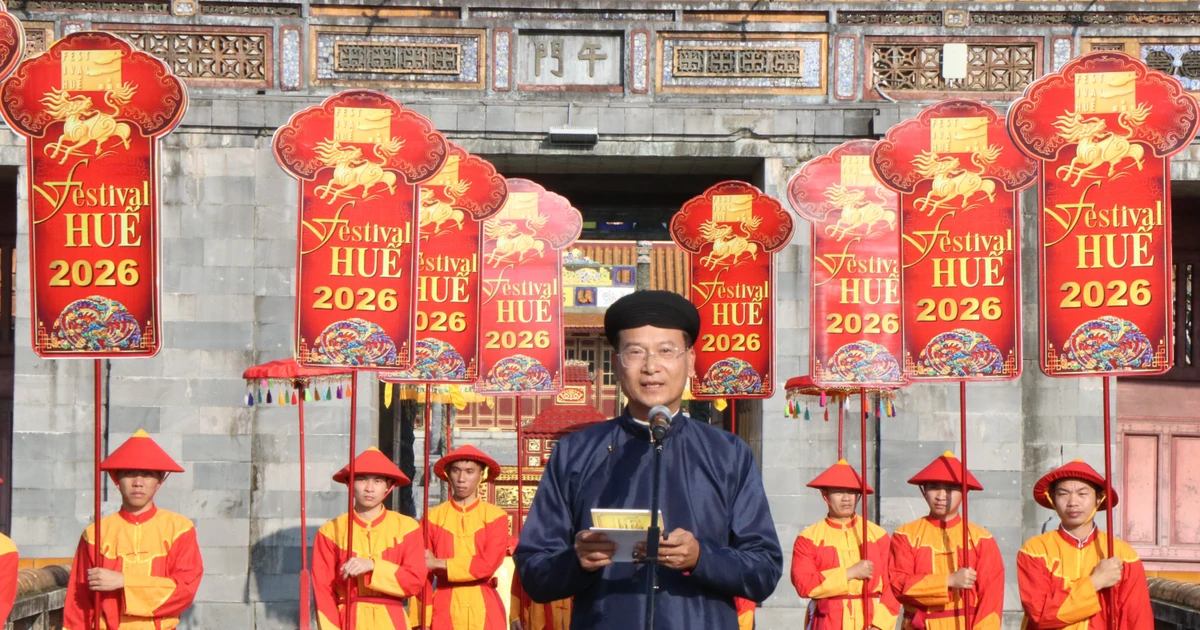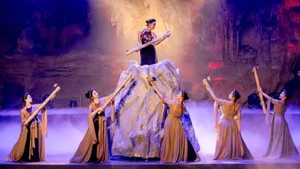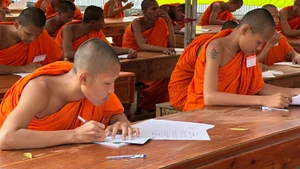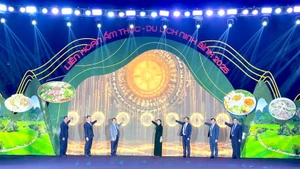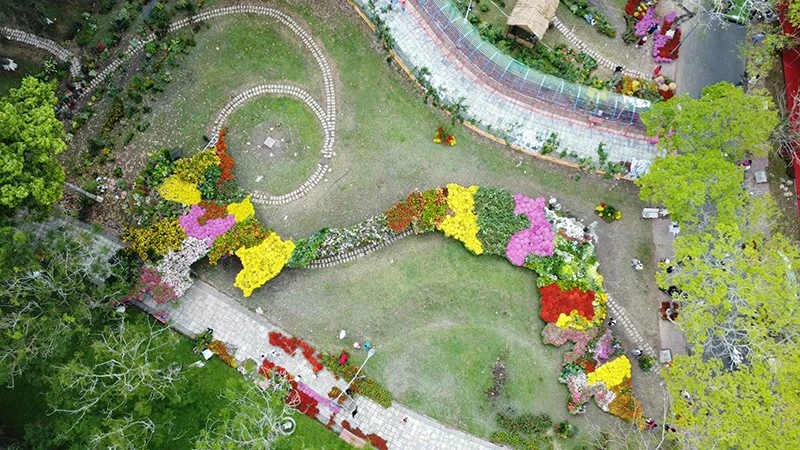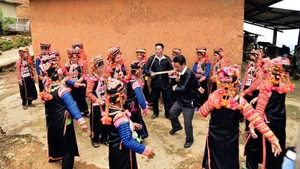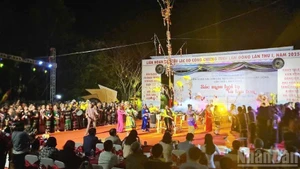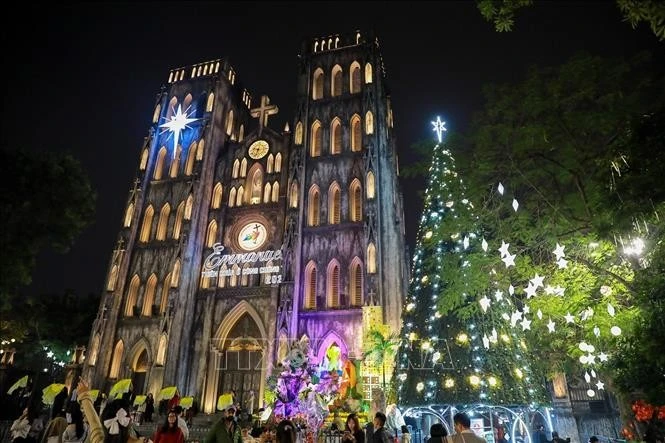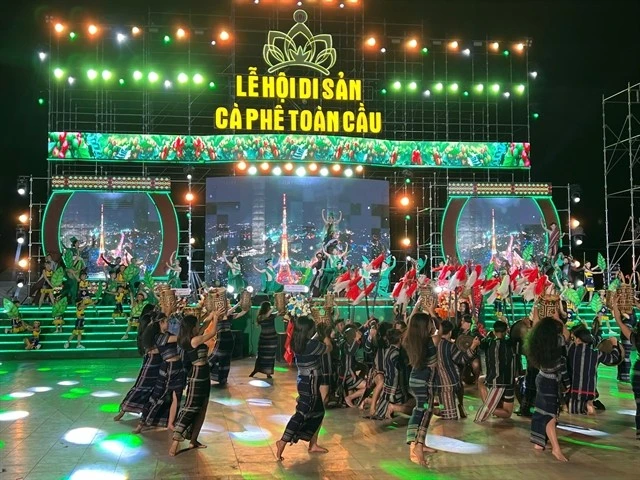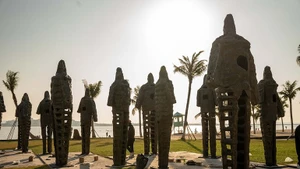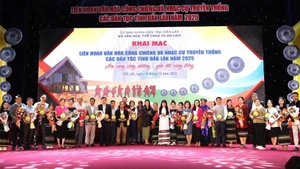Themed ‘The Roar of the Red River’, the exhibition recreates the vibrant atmosphere when military forces march into the capital in autumn 1954 to take over the capital from the French invaders.
The works on display are arranged into two topics. The first one, named ‘The long resistance’, showcases photos and documents recalling the atmosphere during the 60 days when the Hanoi army and people acted in response to President Ho Chi Minh’s appeal for national resistance against the French in December 1946.
Promoting the spirit of ‘Determined to brave death for the survival of the Fatherland’, the Hanoi army and people achieved many glorious feats of arms, which created favourable foundations for preparations for a long war of resistance against French colonialists.
 |
| Photos on display at the exhibition (Photo: toquoc.vn) |
Although the fighting movement was badly repressed and oppressed by the colonial government and many people were arrested and imprisoned, local residents still rose up in various forms, such as distributing leaflets and hanging golden star red flags.
After the historic victory of Dien Bien Phu Campaign in 1954, the French were forced to sign the Geneva Accords and withdraw their troops from northern Vietnam.
The second part of the exhibition, named ‘The historic return day’, hailed Hanoi residents’ efforts to fight against the enemy’s sabotage plots to protect the city’s infrastructure.
Valuable document photos featuring the victorious army marching in Hanoi on October 10, 1954, marking the complete liberation of the capital city, are also introduced to visitors at the exhibition.
The opening ceremony of the exhibition was attended by historical witnesses who experienced Hanoi’s liberation day nearly 70 years ago.
On October 8, 1954, Binh Ca Battalion (of the Capital Regiment, Brigade 308) was the first military unit to advance to Hanoi with the task of receiving the French troops’ bases and ensuring the safety for the entire army which would take over the capital.
 |
| Colonel Duong Niet is among historical witnesses attending the opening of the exhibition (Photo: thethaovanhoa.vn) |
Colonel Duong Niet, who was a soldier on duty under the Binh Ca Battalion at that time, recalled that he and his team strived to minimise French’s sabotage plots to destroy Hanoi’s infrastructure, maintain security and order, and make preparations to welcome the delegation to take over the capital.
The atmosphere in Hanoi before the liberation day was quite quiet, he said, but when the last French soldiers withdrew across Long Bien bridge, Hanoi was filled with flags and flowers.
Even though the city government has not yet been established, locals sew flags, slogans, and made welcome gates to salute the victorious army.
Do Hong Phan was a young student of Chu Van An at that time. She joined the revolutionary activities at a very young age and enthusiastically took part in Hanoi students’ movement to fight against French domination.
She was arrested and imprisoned after leading a group of students to hang a golden star red flags and fire crackers at Trung Vuong School to celebrate the victory of the 1950 Autumn Winter Border Campaign. She was then released because she was not 18 years old enough.
On Hanoi’s liberation day, Phan marched in the street with her friends, weaving flags and flowers to welcome the victorious army, and her eyes were filled with tears of happiness.
“I will never forget these images on such a memorial day”, she asserted.
Nguyen Tien Ha — who attended the historic flag saluting ceremony held by Hanoi City’s Political and Military Committee on October 10, 1954, after the capital liberation - recalled that while admiring the national flag fluttering on the flag tower of Hanoi, he shed tears remembering his comrades and compatriots who laid down their lives for the capital’s liberation
He expressed his hope that more events like this exhibition will be held to educate people on the country’s revolutionary tradition and fuel patriotism among the younger generation.

